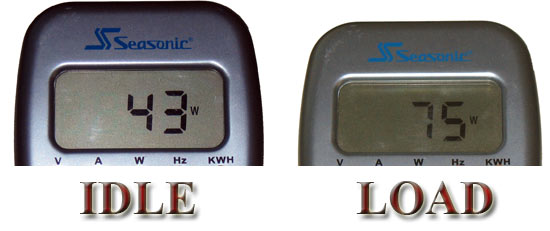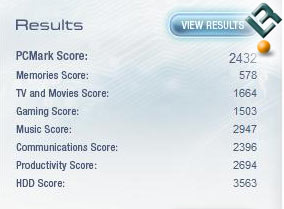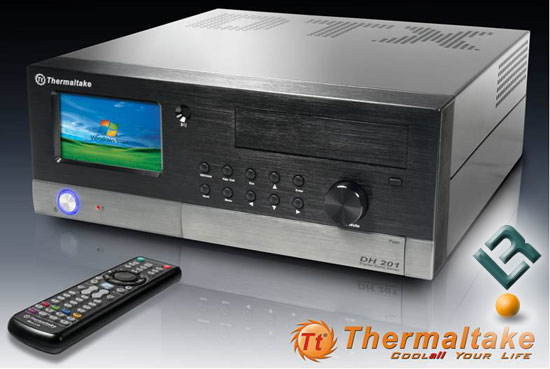AMD DTX Specification For Small Form Factor PCs
Power Consumption, Performance & Conclusions
Power Consumption:
When it came to power consumption, it was shocking to see how little this system used. If you read this article all the way through, you’ll recall that it had an Enhance ENP-2725J 250W power supply and while that is not a lot of horse power, this system doesn’t really need it.

With the system running AMD CoolnQuiet technology, the power consumption results were awesome. At idle the entire test system consumed just 43W and at full load with two instances of Super Pi running it was 75W! Part of this is due to the fact it has integrated graphics, but it’s still impressive to see a system using this small of a footprint when it comes to energy usage.
Benchmarking:
Since we are running 32-bit Vista we ran the lastest version of PC Mark to see how the reference system fairs. This new version of PCMark shifts its focus away from only providing pure hardware performance-analysis results, to generating accurate performance ratings based on popular Windows Vista Consumer Scenarios ranging from media and entertainment to productivity and communication. PCMark Vantage also incorporates an updated interface with easier access to test details and selections, results, system info and other features for 32 and 64-bit computers.

With a score of 2432, the test system performed as we expected with the major bottleneck being the 1GB of DDR2 667MHz memory and the integrated graphics. Our HTPC just happens to use the same processor and chipset and was able to score 3260 PCMarks as it had 4GB of DDR2 800MHz memory and discrete graphics (ATI Radeon HD 2600 XT). When the retail DTX motherboards come out, we hope they support DDR2 800MHz memory as 667MHz memory is limiting performance on the memory bandwidth front.
Final Thoughts:
Over the past ten months AMD has brought the DTX specification from a design on paper to an actual product that works. It is obvious that AMD is listening to market demands, as just this year alone they have announced low-wattage 45W desktop processor offerings and the DTX specification that will help make HTPC’s smaller, cooler and quieter. Now that AMD has gotten the ball rolling, industry partners such as Albatron, Asus, Cooler Master, ECS, Gigabyte, MSI, Silverstone, and Thermaltake need to pick up the DTX form factor and run with it. All of these companies are releasing DTX platforms, whether it be a chassis, motherboard or a complete OEM system. When these companies launch retail products is when the market should get excited about what DTX can offer.

The Thermaltake VH5001BNS Home Theater Media PC (pictured above) is just one example of new and innovative DTX cases that will be coming out in the near future. This DTX and mini-DTX form factor case has a built-in, revolutionary 4.3 touch screen hot keys module that is bound to peak the interests of HTPC enthusiasts around the world. The Thermaltake VH5001BNS obviously doesn’t follow the AMD reference design for a DTX case, so it should be interesting to see what all the other companies come up with. New specifications are not that exciting to write or read about, but the products that come from them are and it’s just starting now!
Legit Bottom Line: The DTX Specification is coming close to having retail prodcuts and is trying not to follow in the footsteps of BTX!

Comments are closed.